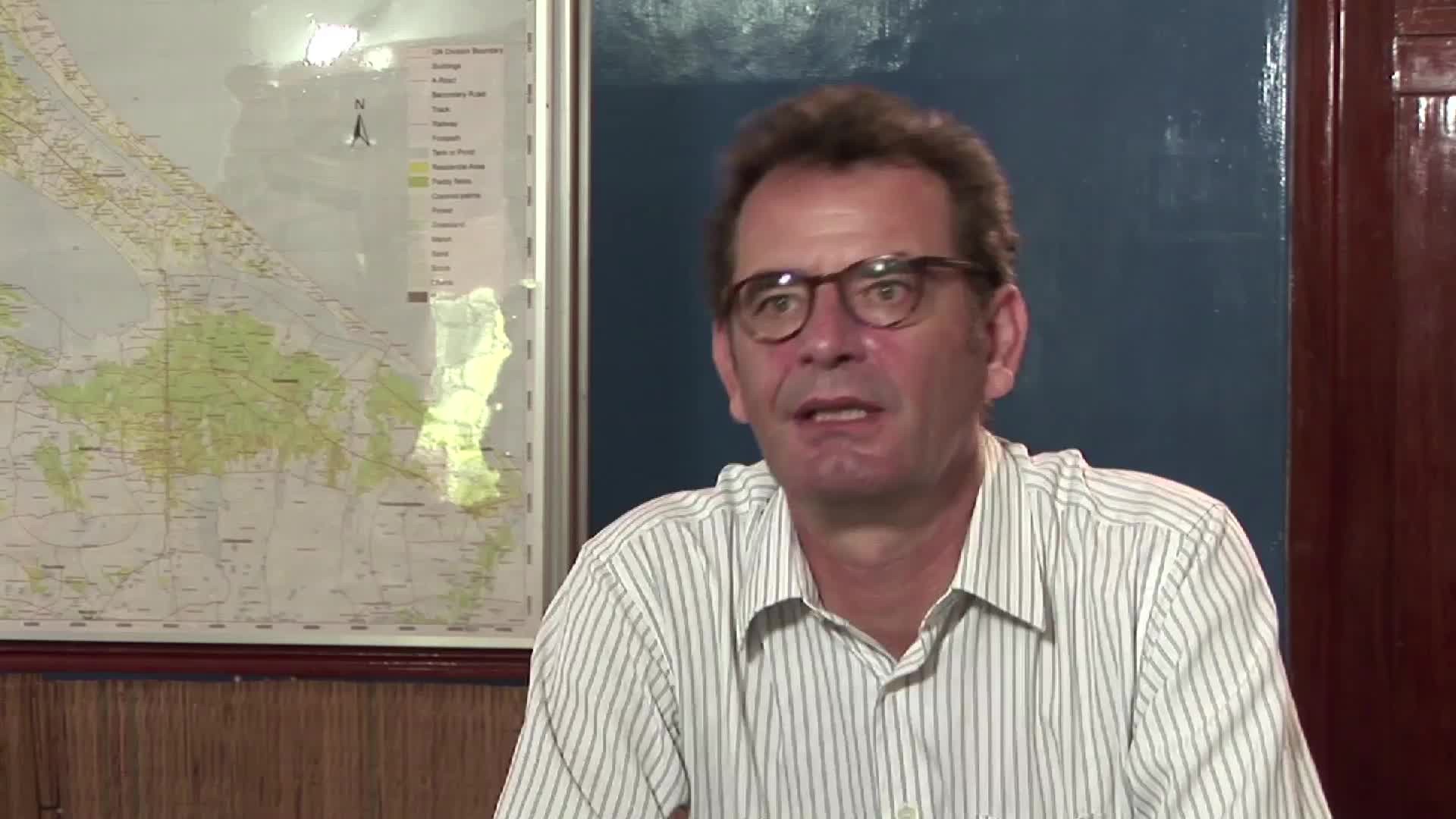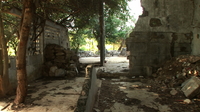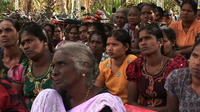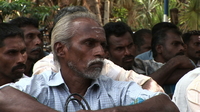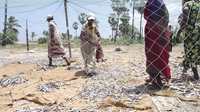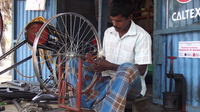Sri Lanka Swiss Humanitarian Aid since 2004


In 2004 Sri Lanka was hit by one of the largest tsunamis in living memory. The east and north coast were devastated, many lost their livelihoods, homes and loved ones.

Shortly thereafter, the conflict between the government and the insurgent LTTE (also known as the “Tamil Tigers”) who controlled Tamil-majority areas resumed, displacing hundreds of thousands of people across the north of the country.

The conflict was ended by the central government’s decisive military victory over LTTE forces in 2009. This led to hundreds of thousands being held in retention camps, but is also made way for people to return to their former homes – or rather, where their homes had once stood.

Present in Sri Lanka since 2003, SDC’s Humanitarian Aid was quick to respond to the tsunami and then to the needs of the many returnees from 2009 onwards.

The core approach was to reconstruct houses, often in
new, safer locations, particularly where houses had stood on the coast in zones
now considered at risk in the event of a future tsunami. But houses were also
reconstructed on the previous plots of house owners, whose houses had been
destroyed in the course of hostilities or who had been banished due to the
establishment of military “security zones”.
Sometimes they had to wait for many
years before they received the permission to return and start rebuilding.

The early attempts at reconstruction in the wake of the 2004 tsunami were unfortunately not always as successful as expected, particularly where the hoped-for access to jobs and schools did not follow reconstruction. So over time, reconstruction was pursued with ever greater sophistication, leading to the Village Development Approach, which itself became ever more refined as time wore on.
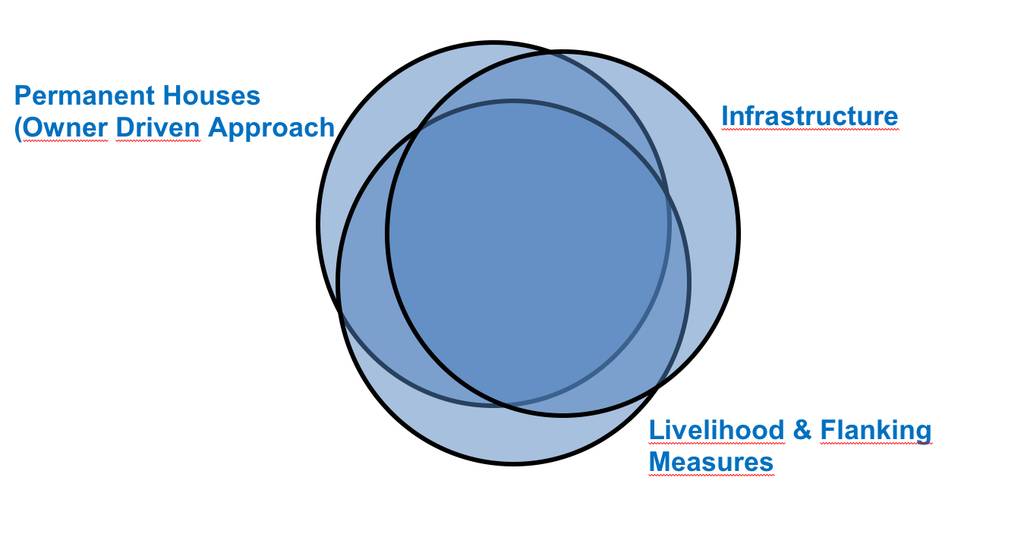
At
its heart, the Village Development Approach is driven by the repossession of
previously occupied land by returnees, who then rebuild their houses at their
own pace by means of technical support coupled with a stipend which is paid out
in rates according to construction progress. Also, reconstruction focusses on
the reconstruction of entire villages at a time. This makes supporting
beneficiaries easier, and it boost the communal feeling between adjacent
house-owners.
But the Village Development Approach is far more than just
building houses. In order to have the best chances for a thriving future, recovering
communities have to be supported by investments in community infrastructure,
such as nurseries and schools, and livelihood-related support has to be
provided, be that through infrastructure, such as water retention ponds, or be
that the economic environment through the creation of new business initiatives.
The Village Development Approach has attempted to capture many of these
important needs in its structure in order to help returnees in a holistic way.


Reconstructing houses is the centre piece of the whole approach, and having a solid roof over one’s head is one of primary needs for families everywhere. Traditionally, humanitarian reconstruction has been driven by donors, meaning that beneficiaries have not had much involvement in the actual process.

In Northern Sri Lanka, we have adopted a beneficiary-driven approach, which puts the beneficiaries at the centre of the undertaking and makes him or her the driving force behind the building process. Support is paid as stipend (totalling around CHF 5,000 per house) in around five instalments on the basis of the progress they have made in the course of construction.

First, they receive an advance payment, and then further payments on completion of the foundation, the walls, the roof and so on. This gives them the opportunity to shape the building to their own needs and aspirations, for instance by adding optional extras with their own financial resources. This gives the beneficiaries ownership of the process and the result. Last but not least, it is also highly cost effective.

In choosing the beneficiaries, one criterion was their ability to provide some counterpart contribution to demonstrate an invested in construction. Beyond that, single-parent households or households with members with disabilities were particularly encouraged to take part.

In the period 2009 – 2015 we built … or rather, beneficiaries built, 5,000 houses with our funding and support. Other donors, be that UNHABITAT, the EC or India copied the concepts we pioneered and continue to foster the reconstruction of houses for post-conflict returnees across the North of Sri Lanka.

Of course, while some people are natural talents when it comes to managing this kind of project, others are not as gifted. This is why SDC provided regular support to ongoing house owners. This obviously included technical and planning advice, but it also meant offering people psycho-social counselling, or financial guidance, so as to be sure that they built within their financial means, and if they did decide to take out loans, that these were from reputable sources and serviceable with their income.
Only 1% of beneficiaries needed special support to bring their projects to completion. All the rest successfully became house owners with the standard set of support measures provided by the programme.

Now as you will know, just owning a house far away from schools, shops and jobs, is nice, but not going to make you happy in the long run. The very essence of the Village Development Approach is to invest heavily in the kind of things that make a community a community.

Parents want to send their children to school; this means nurseries and schools have to be close at hand. People need to earn money; this means ways to build a livelihood must be available not too far from where they live.
Livelihood projects included training and capacity building, and they were implemented by TdHL, Solidar and local NGOs.


